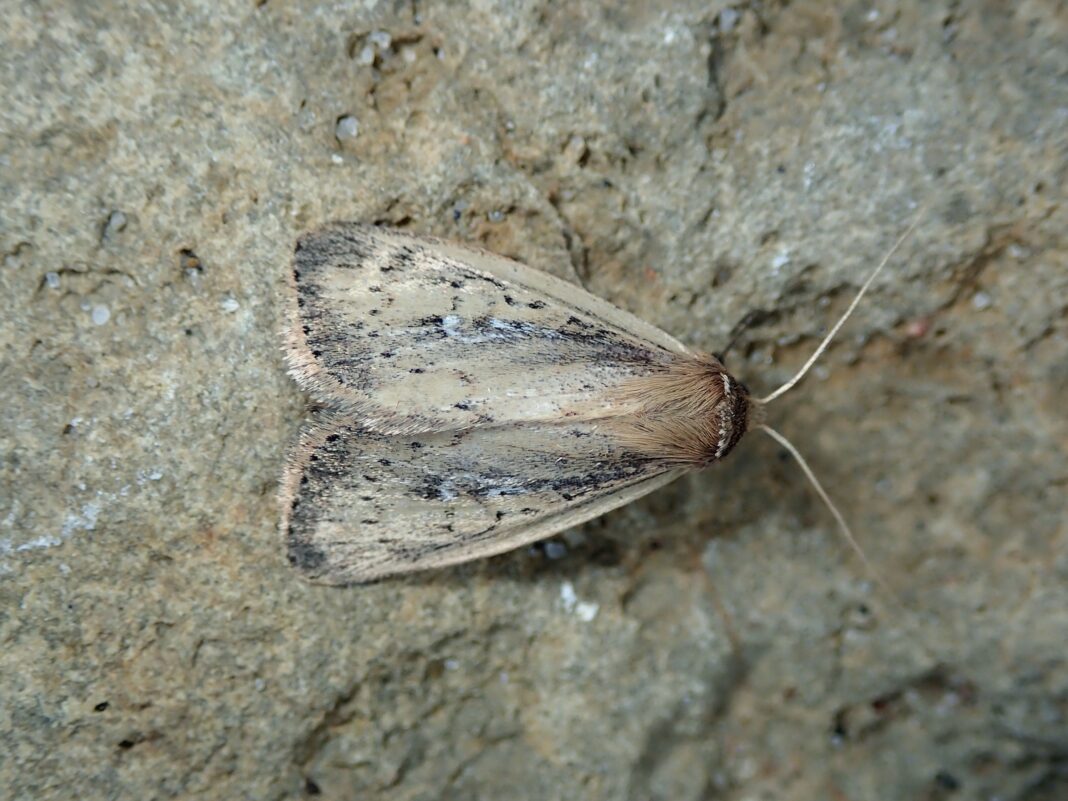by Tom Sasvari with files from Jacqueline St. Pierre, Local Journalism Initiative Reporter
MANITOULIN—The coordinator of the Manitoulin Phragmites Project is hopeful but cautious on introducing two special species of caterpillars being used in other locations of Ontario to try and fight the invasive weed phragmites on Manitoulin.
“I’m really hopeful and optimistic, but I want to wait a little while before trying to bring it to Manitoulin,” said Judith Jones of Manitoulin Phragmites Group. “Phragmites are a grass weed and we want to make sure these caterpillars don’t eat food crops like corn, oats, wheat and barley. And what Manitoulin has is rare alvars, lot of natural marsh grass such as prairie and oak savannah that these caterpillar species have not been tested on.”
“I think we should wait a little while and see what happens in other areas where these caterpillar species are being introduced,” said Ms. Jones. “Manitoulin Island is too special a place to take any chance at all. But I hope it works in other areas as we don’t want to have to continue to use herbicides on phragmites.” She said the caterpillars are going to be used in an area near North Bay.
Since 2021, over 21,000 caterpillars and larvae have been released at approximately 30 locations across Ontario. The Canadian Food Inspection Agency (CFIA) approved two moth species, Lenisa geminipuncta and Archanara neurica, for biocontrol in 2019. These caterpillars feed exclusively on phragmites.
This biological control method aims to provide a long-term and sustainable solution. Early observations indicate that the insects damage nearby phragmites and consistently return in subsequent years. The successful reproduction and overwintering of these moths in Canada are promising steps in the biocontrol program.
The project is a collaboration of Ducks Unlimited Canada, Agriculture and Agri-Food Canada, the University of Toronto, and the Centre for Agriculture and Bioscience International in Switzerland. In addition to canisters, the team releases caterpillars from cut phragmites stems placed in florist foam blocks on the ground. While these caterpillars have been used in other countries, it took about a decade for their impacts to be studied and approved in Canada, ensuring that they target only phragmites.
Ducks Unlimited Canada helped select the release sites based on various criteria, including geographic distribution.
Marilee Koenderink, working group chair of the Phragmites Working Group Lake Bernard, in Sundridge, told The Expositor last week, “this is a new tool in the toolbox. We are interested in this type of biocontrol program. There is a group in southern Ontario that has 30 nurseries set up. And at the Ontario Phragmites annual general meeting it was noted there is support to connect all sites up to North Bay and beyond using a group of University of Toronto students to do the testing.”
Ms. Koenderink explained in a presentation to the Strong town council this spring, Dr. Michael McTavish of the University of Toronto and Dr. Ian Jones who are leading the research along with a team behind them heard of the local working groups battle with phragmites and contacted the volunteers indicating they might be able to help. That help is in the form of the biocontrol program by introducing the two species of moths to the area with the goal of reintroducing the phragmites to their natural enemies. She said Dr. McTavish and his research teams would like to set up a nursery in the Lake Bernard area with both species of moth eggs. When the caterpillar hatch from the eggs they make their way to the phragmites where they would bore into the stems and begin eating. This continues until the caterpillars go into their cocoon stage and emerge as moths, and after mating they start the cycle over again on their own.
Ms. Koenderink told council Dr. McTavish would set up the nursery which cannot be removed and would be monitored and managed by the researchers for four years. She said the biocontrol program is self-sustaining and the moths are not a threat to native plant species.
The researchers have established 13 sites across southern Ontario that face phragmites issues, and at several locations the caterpillars have caused visible damage to the plant, Ms. Koenderink told The Expositor. Once the caterpillar bores its way in the phragmite stem and begins feeding, the weed wilts or dies. Members of council liked the proposal and directed staff to come back with a report to identify a site for the biocontrol program.
Matthew Joiner, in the Invasive Species Awareness program with the Ontario Federation of Anglers and Hunters, who is in his second year as a student at Fleming College said, “We were approached this past winter by the Lake Bernard group, Sundridge property owners, and Near North environmental committee.”
“Any useful tool against phragmites is something we are interested in and this is another,” said Ms. Koenderink. “Council gave its approval we will have this project in place here next March. Currently we are undergoing an education program for all property owners and neighbours.”
The Phragmites Working Group Lake Bernard is a community collaborative made up of the village of Sundridge, the township of Strong and Joly, the Lake Bernard Property Owners Association, the Near North Enviro Education Centre and volunteers and is starting season seven of invasive phragmites australis management.
“We are seeing success with mechanical removal, repeated cutting to drown and spading of phragmites,” said Ms. Koenderink. “We now have approval from our townships to have a nursery site on Lake Bernard next March (2025).”
According to Ontario’s Invasive Species Centre, invasive phragmites, regulated under the province’s Invasive Species Act, provide poor habitat and food for native wildlife like turtles, lower water levels, and affect recreational activities like swimming, boating and fishing. The centre advises staying on designated trails and cleaning clothing and equipment to prevent spreading phragmites seeds.
Over the next four or five years, researchers hope to see significant reductions in phragmites aggressiveness, including decreased stem density and height, fewer flowers, and the return of native plants to infested sites.





